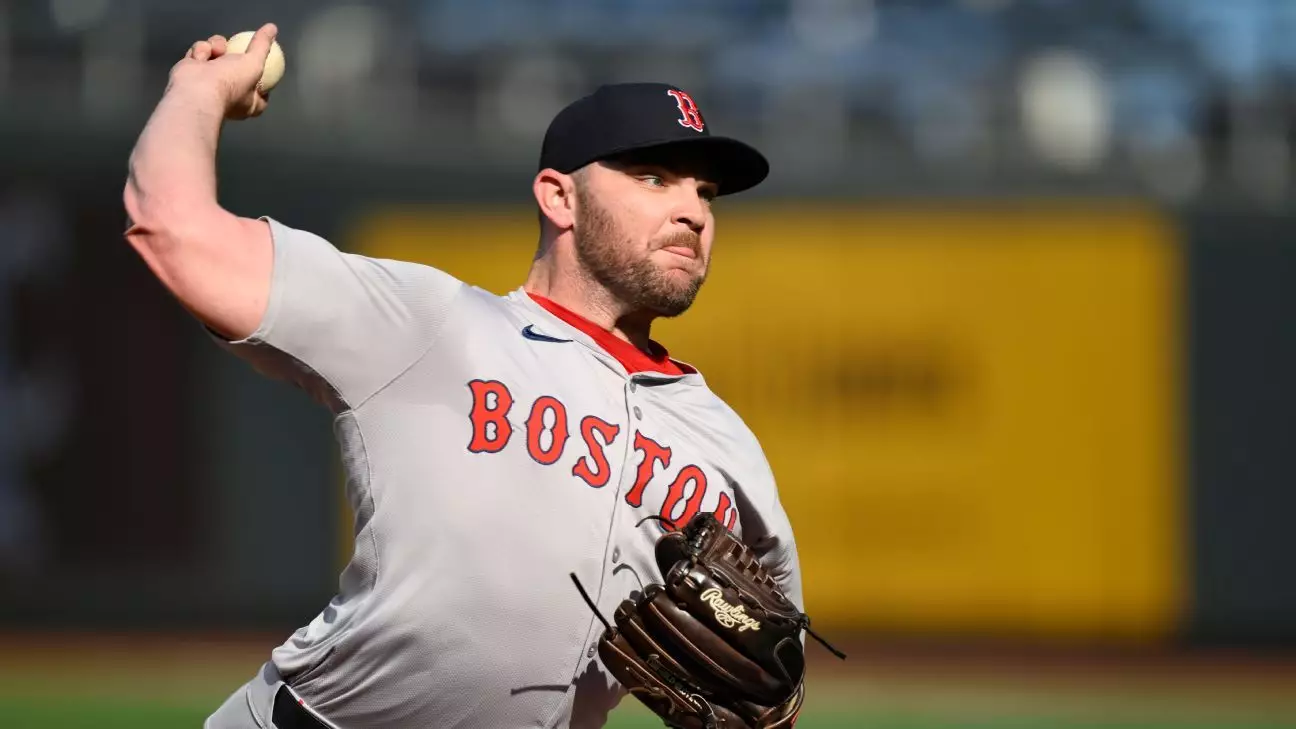In the world of professional sports, the spotlight shines brightly on athletes, illuminating every achievement and misstep alike. This scrutiny often comes with a heavy burden, as seen recently when Boston Red Sox reliever Liam Hendriks publicly condemned the death threats he and his family received following a game. Such incidents spark a much-needed dialogue about the corrosive effects of toxic fandom and the responsibilities we hold as a society towards these public figures. The actions of an individual or the collective ire of a fanbase can have dire consequences that ripple beyond the field, penetrating the private lives of athletes and their loved ones.
Hendriks bravely voiced his experiences on social media, stating that the threats against him and his family are “horrible and cruel.” This statement resonates with an alarming frequency as numerous athletes have similarly endured the specter of online harassment and threats. Expressing his frustration, Hendriks not only advocates for himself but also gives voice to countless players who have faced similar brutality through the anonymity of the internet. The emotional toll of such experiences can be profound, driving a wedge between the joys of competition and the very real fears that accompany being a public figure.
The Role of Leadership in Sports
Boston Red Sox manager Alex Cora emerged as a pivotal figure in this discourse, providing support and empathy towards Hendriks. His acknowledgment that athletes are often subjected to undue scrutiny reflects the responsibilities that leadership roles bear in protecting not just the players, but their families, from the harsh realities of social media vitriol. Cora’s remarks highlight the duality of social media: it connects fans and athletes, but it also enables a dark side where anonymity breeds contempt and cruelty.
“Sometimes, it comes from real people. Other times, it comes from burner accounts,” Cora observed, illustrating the murky waters athletes must navigate. In a world where each pitch and play can lead to an avalanche of online outrage, the fine line between passionate fandom and harmful behavior becomes increasingly blurred. It’s crucial for teams and organizations to create a culture where well-being is prioritized, allowing athletes to thrive without the omnipresent threat of harassment hanging overhead.
Society’s Complicit Role in Toxic Fandom
The conversations surrounding mental health and emotional well-being in sports amplify the need for societal introspection. Fans, team owners, and sports media must recognize the extent to which their actions contribute to an environment ripe for toxicity. With the advent of sports gambling, the stakes in every game have escalated, leading to heightened emotions that can sometimes erupt into irrational behavior from fans. Cora’s insight into the “dangerous path” of betting serves as a poignant reminder that the consequences of each game extend beyond the scoreboard. It is imperative that we engage in critical conversations around gambling culture and its influence on how we perceive and interact with athletes.
Indeed, the culture of sports comes hand-in-hand with the responsibility to create a safe environment, one that prizes respect and empathy over hostility. As Cora reflected on his own experiences after being involved in the Houston Astros scandal, he acknowledged the personal ramifications that accompany public scrutiny. The sense of fear that accompanied his family during those trying times sheds light on the dire need for a cultural shift within sports, where sensitivity and understanding take precedence over harsh judgment and public derision.
The Power of Advocacy and Change
Moving forward, advocacy is essential for change. Both Hendriks and Cora illustrate the importance of speaking up against the tide of negativity that permeates sports. Whether through social media campaigns, organized player initiatives, or community outreach, athletes can inspire a new generation of fans to embrace a supportive culture. As spectators, we must confront our biases, understand the intricacies of sportsmanship, and ultimately, prioritize humanity over rivalry.
The responsibility is collective. As we admire the athletes for their talents, let’s also recognize their humanity. Beyond the thrilling moments we cherish, they are people navigating the highs and lows of life in the public eye. In doing so, we foster an environment where every athlete can feel secure, appreciated, and, most importantly, human – away from the unforgiving scrutiny of the virtual crowd.

